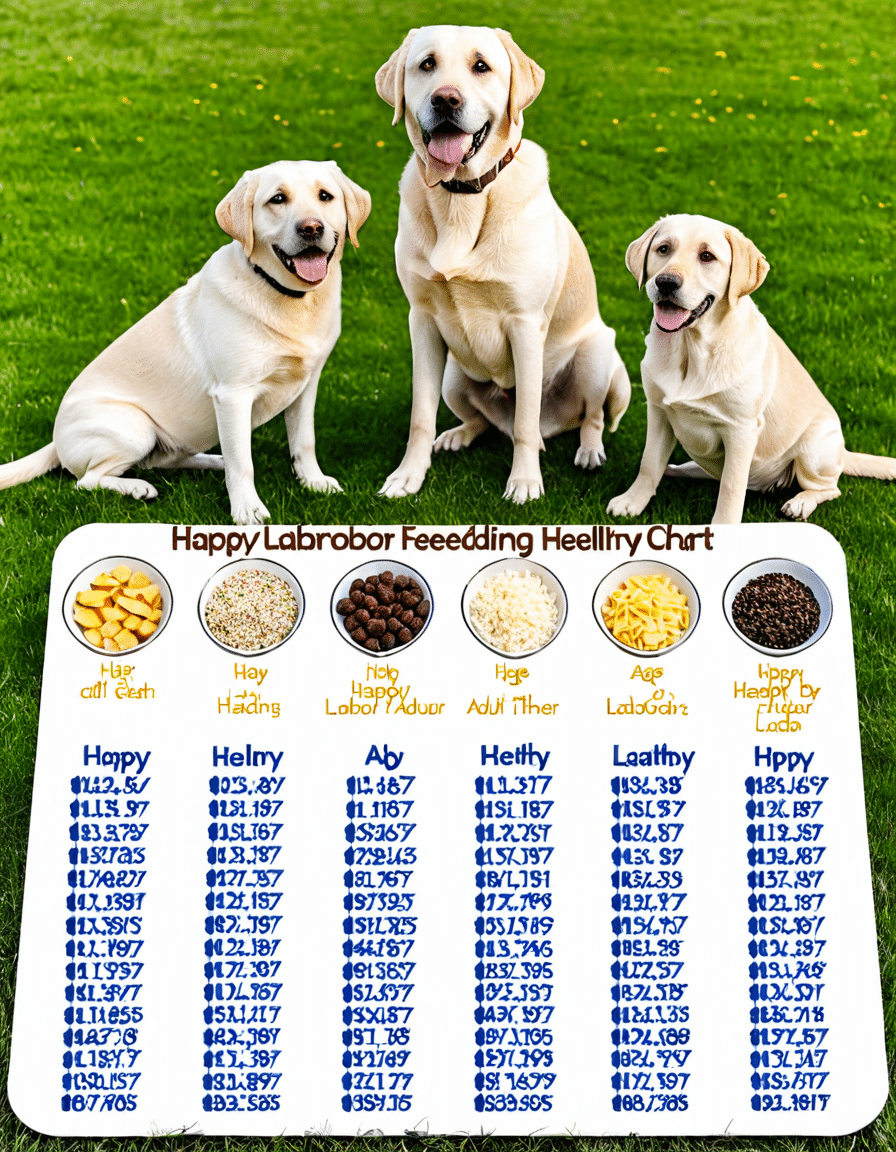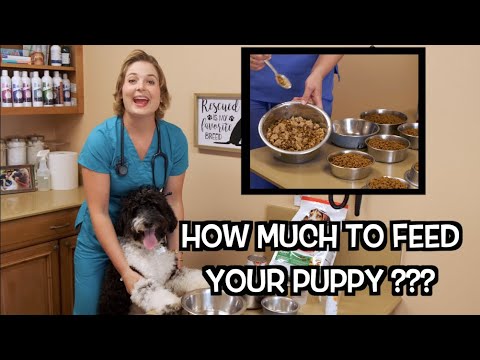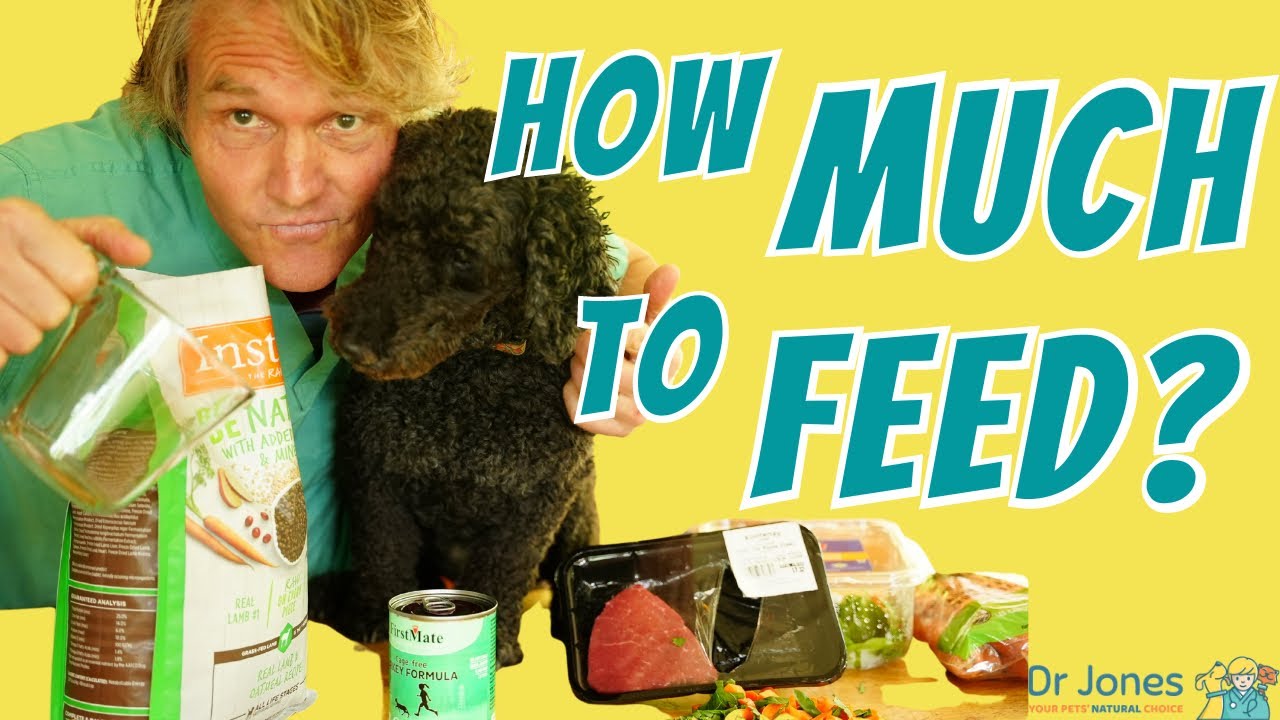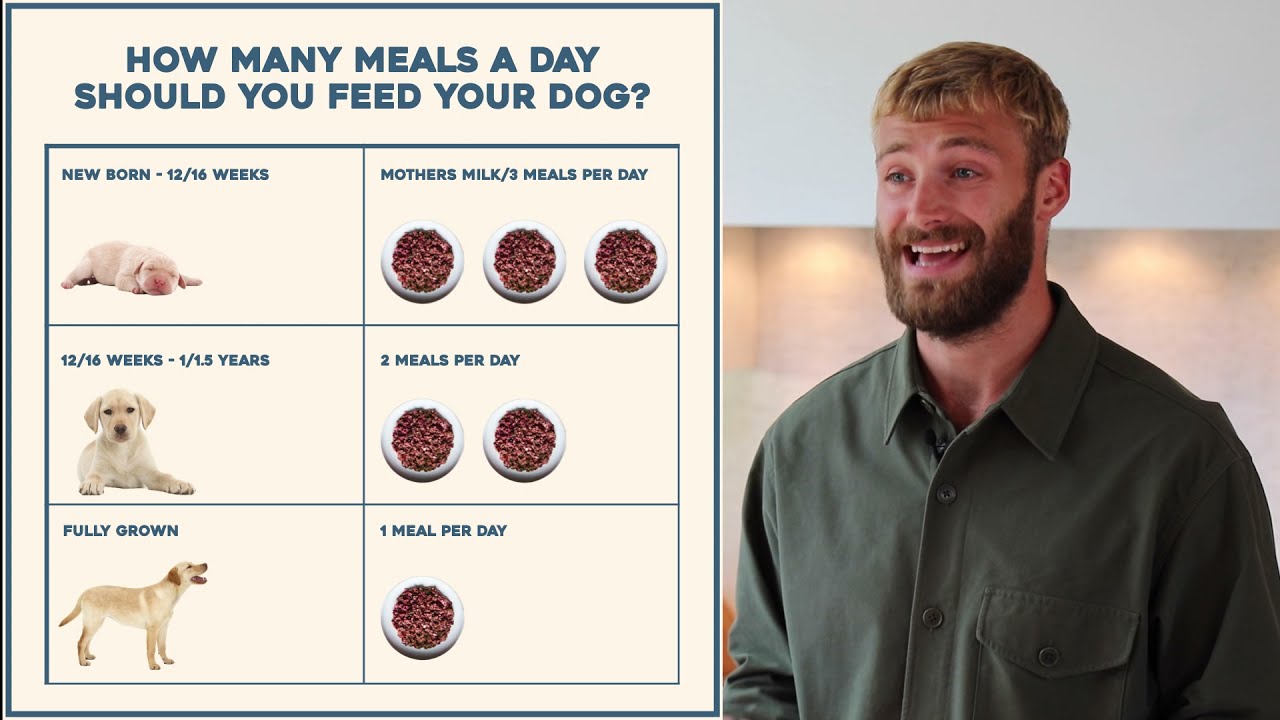Understanding how to feed your Labrador as they mature is crucial to their health and development. This comprehensive labrador feeding chart by age is designed to equip every dog owner with the knowledge they need for healthy growth. From puppies to seniors, each stage in a Labrador’s life requires careful attention to their dietary needs. Let’s journey through these phases together to ensure that your furry friend thrives!
1. Newborn to 6 Weeks: Nutritional Needs at the Start of Life
During the first six weeks, your Labrador puppy relies solely on their mother’s milk. If the mother is unavailable, a high-quality puppy milk replacer becomes essential. This stage is all about rapid growth, so prioritize the following:
At around four weeks, you can start transitioning them to wet puppy food mixed with water. It’s best to avoid solid foods until the 6-week mark, as this ensures proper digestion and absorption of nutrients.
This early stage is critical for laying the foundational growth your Labrador will need. Consider reputable brands like Royal Canin for puppy milk replacers, which provide the essentials your pups require.
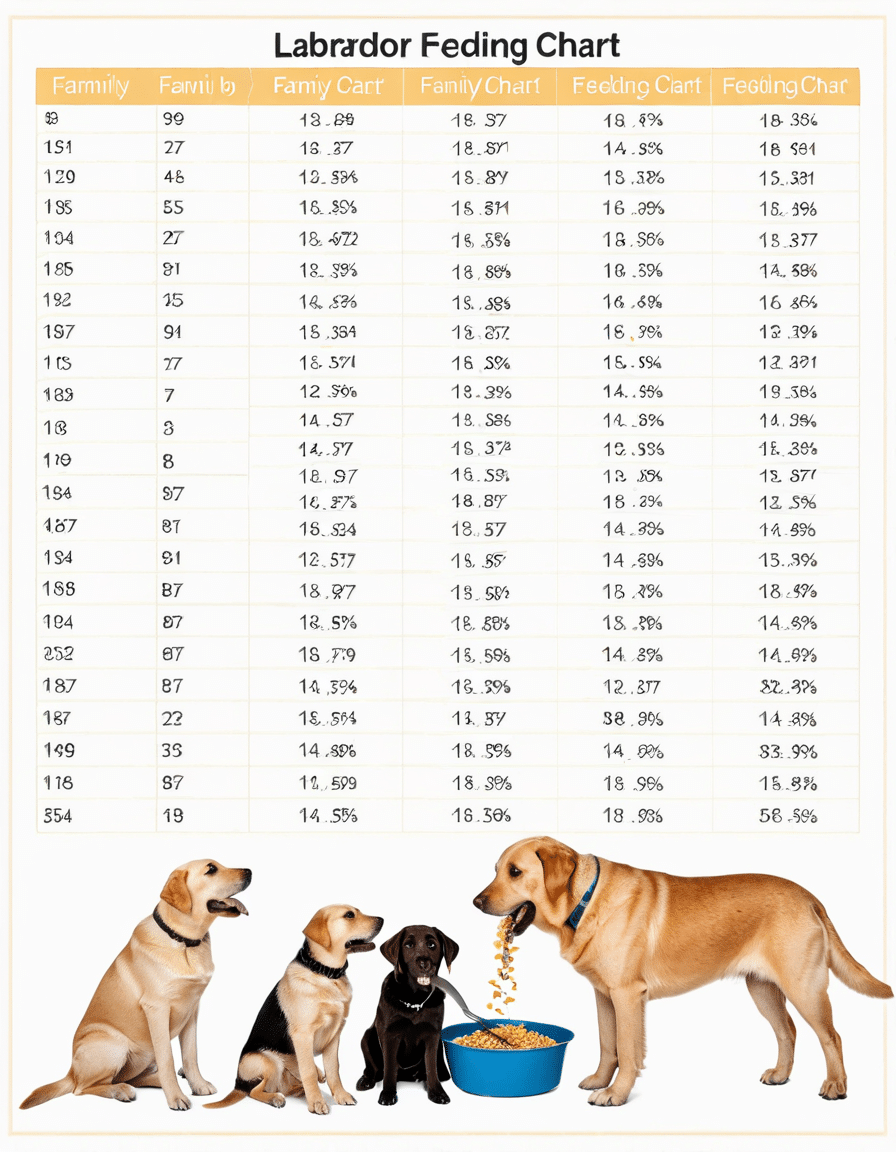
2. 6 Weeks to 3 Months: Growing Fast
From 6 weeks to 3 months, your Labrador really starts to grow. This is a critical developmental phase, so you’ll want to focus on solid food:
Start introducing high-quality puppy kibble meant for large breeds, like Purina Pro Plan Large Breed Puppy. These formulas provide important nutrients to support healthy joint and bone development. Keeping the pace of growth in check is pivotal to preventing issues later on.
This is also a good time to socialize your puppy. Just as important as their diet is exposing them to various people and environments. After all, a well-rounded pup is a happy pup!
3. 3 to 6 Months: Building Strength and Stamina
As your Labrador continues growing, their nutritional needs evolve:
Incorporate transitional foods like Taste of the Wild High Prairie Puppy Formula. This kibble includes protein sources such as real roasted bison and venison, which are great for developing essential muscle strength.
Monitor your pup’s weight closely; rapid growth can lead to developmental issues. Keeping an eye on their calorie intake and activity levels is vital for this energetic stage of life.
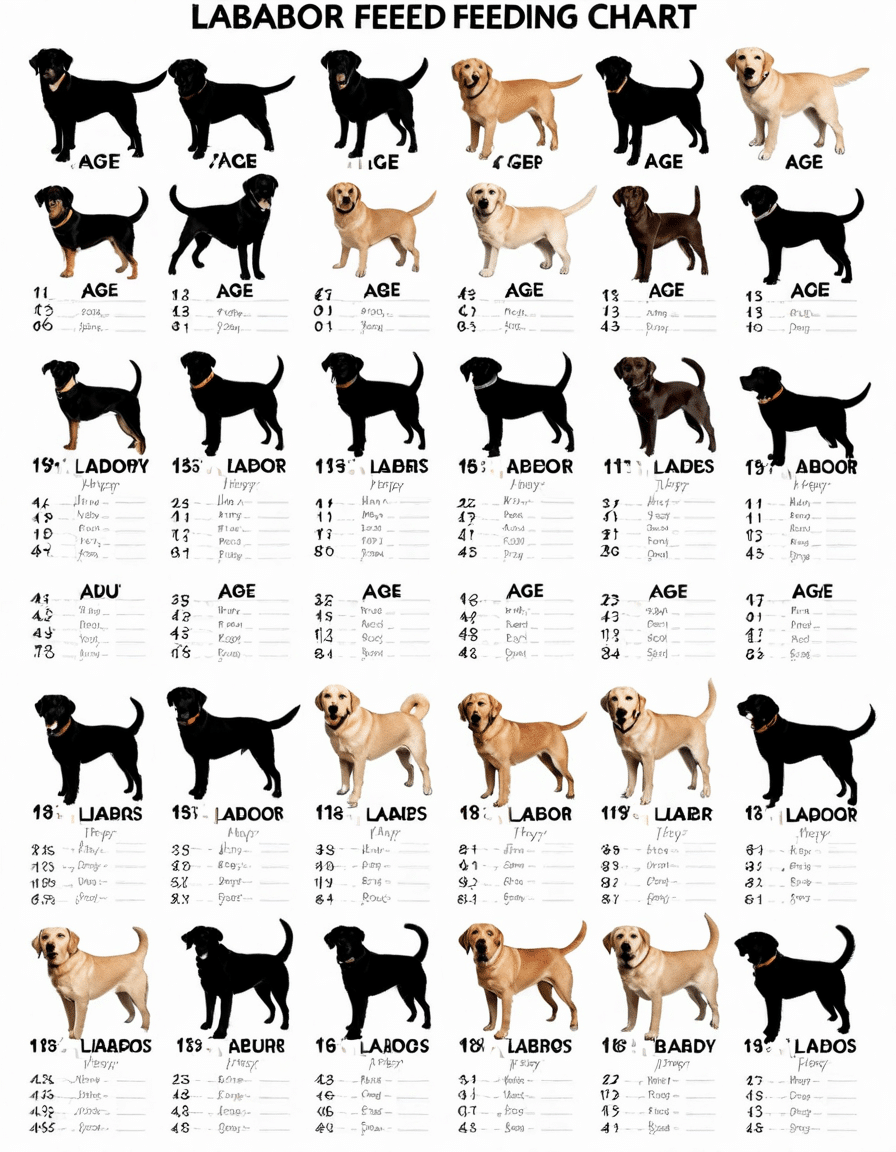
4. 6 to 12 Months: Transitioning to Adult Food
Now, from 6 to 12 months, it’s time to start the transition to adult food. Your Labrador’s growth rate begins to stabilize, and you’ll want to keep their nutritional intake tailored to their needs:
Brands like Hill’s Science Diet Large Breed Adult Chicken Recipe strike a great balance at this stage. They help promote healthy growth while keeping your Labrador’s weight in check. You’ll want to adjust the calories based on their activity level—active Labs will need more food to sustain their energy.
It’s also worth noting that around this time, your dog may become more playful and start to show their personality. Ensuring they remain well-nourished can directly influence their behavior and overall demeanor!
5. 1 Year and Beyond: Maintaining Healthy Weight and Well-being
At one year old, your Labrador is officially an adult! Now, you’ll shift your focus to maintaining health. Here’s what to keep in mind:
Consider an adult formula like Blue Buffalo Life Protection Formula, which provides a well-rounded nutrient profile essential for keeping up with an adult Lab’s lifestyle.
If your Labrador tends to gain weight easily, a light formula could be beneficial. Monitoring their weight is crucial during these years, as Labradors can be prone to obesity.
6. Special Considerations for Seniors: Adjusting for Age
As Labradors reach their senior years—typically around 8 years old—their dietary needs will change:
Opt for senior formulas like Nutro Ultra Grain Free Adult Food, which contain fiber and controlled fat to help manage weight. Senior dogs often require fewer calories, so adjusting the amount you feed them is vital.
Keep an eye out for dental health as well—seniors might need softer kibble to help them chew effectively. Regular vet check-ups can ensure that your aging Labrador stays healthy.
Innovative Wrap-Up: Ensuring Lifelong Health for Your Labrador
Building a feeding routine based on your Labrador’s life stages is essential for fostering a healthy, active life. Leveraging tailored breed-specific foods can make a world of difference. A balanced diet from puppyhood to senior years provides the groundwork for a long, healthy life.
It’s also essential to remember that your Labrador’s dietary needs can vary based on their unique disposition and activity level. Always consider consulting a veterinarian for personalized recommendations. With their constant love and loyalty, our furry friends deserve the best.
While this guide focuses on Labradors, it also highlights the importance of understanding pet nutrition across species—there are valuable insights to glean from variations, like the Maine Coon length chart or the cockatiel age span. These dietary lessons enrich our approach to animal care. Now, with everything you just learned, you’re all set to give your beloved Labrador the nourishment they need!
Labrador Feeding Chart by Age: Fun Trivia and Interesting Facts
The Growth Journey of Labradors
Did you know that Labradors can grow from a tiny bundle of joy into a powerful companion in just a few short years? The labrador feeding chart by age really comes into play during this exciting growth journey. Puppies require more frequent meals, while adults might thrive on just twice a day. This pattern helps fuel their lively spirits, which are often heard echoing through the halls as they dash around, reminding you of their playful nature. Speaking of youthful playfulness, similar energy can also be observed in the local (, where pups frolic with their owners.
Interestingly, Labradors are among the most popular dog breeds in the United States—a fun fact that ties back to their friendly demeanor and adaptability. However, a common misconception is that all dogs have similar dietary needs. This isn’t true! Each dog’s nutritional requirements vary greatly with age. So, following a precise labrador feeding chart by age can help you avoid common pitfalls. If you’re looking for more info on handling those quirky pet habits, you may even stumble upon their secrets related to (raccoon scat).
Nutrition on the Move
Navigating the nutritional landscape for your Labrador can feel like living in an adventure film. Knowing that puppies need high protein levels for muscle development might spur you to look into brands that offer them. In fact, the proper energy levels in youth set the tone for healthy adulthood. With this in mind, making sure you choose food that matches the guidelines in the labrador feeding chart by age will give your lovable friend a head start.
And while training and nutrition are crucial, don’t forget the social aspect. Taking your pooch to (PetSmart puppy training classes) could really enhance their character and make those dinner times even smoother. Plus, it’s a great way for your pup to sniff noses with their furry pals! Speaking of fostering good habits, this dog’s hearty appetite can sometimes lead them to gobble down food faster than you might expect. So, slowing down during meals could be an unexpected technique to explore. Who knew that a simple adjustment could help?
Dogs Love Variety Too!
It turns out that Labradors have a sophisticated palate! Regularly varying their diet with approved treats can keep their mealtimes interesting. Learning about this may remind you of the idea behind detached (how bout that prick’s face epoidsde), where flavor can sometimes enhance the experience. When referring to meal portions, it’s vital to keep track of their intake based on the labrador feeding chart by age. This ensures they don’t end up eating less or more than what’s healthy for them.
Lastly, just because you love their big, floppy ears doesn’t mean you should overlook their sensitive stomachs! Keeping up to date with feeding guidelines means you could be laying the foundation for a long, happy life—a bit like building your dream space in (. And don’t forget, selecting the most suitable food can also avoid the pitfalls of potential health issues later on. Remember, when you make feeding decisions, you’re not just filling a bowl but also shaping your furry companion’s future!
